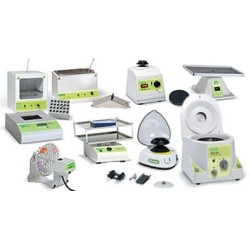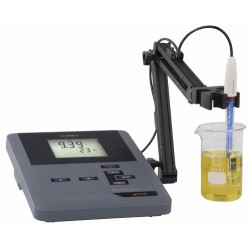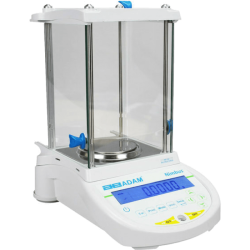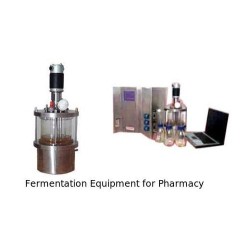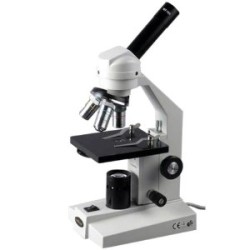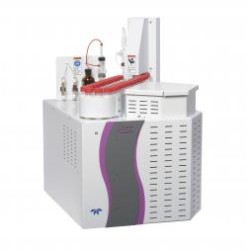A Complete Lab Guide to Osmometer
Posted by
08/06/2018
0 Comment(s)
A Complete Guide to Osmometer

Osmolality is checked using an instrument called “Osmometer” and the technique is referred to as “Osmometry”. Osmometer measures the osmotic strength of a solution, colloid or compound.
Before heading with the details of an Osmometer, an overview is provided on terms frequently used under Osmometry.
Tonicity
Tonicity is an important criterion when it comes to culturing of cells for large-scale production of therapeutic proteins, antibodies etc.
Tonicity affects the movement of water across a semi-permeable membrane. Tonicity of the solution relates to the osmolarity of the solution, i.e., the concentration of solutes in that solution.
Depending upon the concentration of solutes, a solution can be characterized by 3 types.
- Hypertonic - Concentration of solutes is higher in the outside solution causing the cell to lose water.
- Hypotonic - Concentration of solutes is lower in the outside solution causing the cell to gain water. Cells without cell walls swell and burst due to excessive water intake.
- Isotonic - Concentration of solutes is same inside and outside the cell maintaining equilibrium.
Therefore, it is essential to check the osmolality of the culture medium, when cells are to be cultured for a batch process. The osmolality requirement varies from one cell line to other. Also, the osmolality of blood and urine is of prime importance during clinical diagnosis.
Osmolality
- Osmolality is a measurement of the total number of solutes in a liquid solution.
- It is expressed in mOsm/kg H20.
- Osmolality, along with pH, is one critical factor while preparation of cell culture medium.
Different techniques employed in Osmometry
- Vapor pressure depression osmometers
- Membrane osmometers
- Freezing point depression osmometers
Vapor pressure depression osmometer
- Determines the concentration of osmotically active particles that reduce the vapor pressure of the solution.
- Disadvantage:- Volatile compounds exert their own vapor pressure.
Membrane osmometer
- Measures osmotic pressure of a solution separated by a semi-permeable membrane.
- Disadvantage:- Lack of availability of a proper semi-permeable membrane
Freezing point depression osmometer
- Determines the osmotic strength of a solution using freezing point depression.
- Most commonly used method in clinical, pharmaceutical and quality control laboratories.
- Rapid, sensitive and accurate. Hence it is widely preferred over the other two types.
- Requires very less sample size (very few microlitres).
- Easy to use. Does not require sound technical knowledge of the instrument for handling.
The principle of Freezing point depression osmometer
- When a solute is added to a solvent, the freezing point of the solution is lower than that of the solvent.
- As the concentration of the solute increases, there is further decrease in the freezing point of the solution.
- The osmolality of the solution can be determined by measuring the freezing point of that solution.
How does a Freezing point Depression Osmometer works?
- A cuvette containing the test solution is loaded into the cooling chamber.
- The solution is freeze below its expected freezing point with constant stirring by the wire.
- The temperature of the solution is monitored throughout the process by a thermistor connected to the wire.
- Stirring leads to the formation of ice crystals and thermal heat is generated in this process.
- As a result, an equilibrium is achieved and the temperature of the solution remains constant.
- A plateau is achieved which indicates the real freezing point of the solution.
Precautions
- Calibrate the instrument with a known standard before use to ensure proper working of the instrument.
- Use clean cuvettes for freezing (preferably new).
- Wash the cuvettes properly if later use is expected.
- Keep extra cuvettes covered to avoid contact with dust.
- Never keep the freezing chamber empty.
- When not-in-use, place an empty cuvette in the freezing chamber.
- Always wipe the probe and the wire with lint-free tissue to remove traces of the previous solution.
- Check the level of heat transfer fluid at regular intervals. Change the fluid when the solution reaches its warning mark.
- Annually or six-monthly calibrate the osmometer with different ranges of standards to check the efficiency of the instrument.
- Cover the instrument when not-in-use.
Author’s Bio

Author’s name: Kalyani Koli
Kalyani Koli, a post-graduate in Biotechnology, from the University of Mumbai with extensive 8 years of experience in the field of Animal Cell Culture and Immunology. She works as a Senior Cell Culture Analyst at Department of Animal Cell Culture. She has also worked as Copy Editor for Elsevier, Williams & Wilkinson and America Online. Follow Kalyani on Facebook




